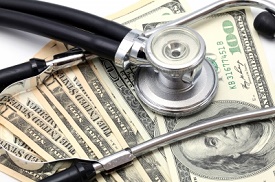With an aim to bring fiscal discipline, President Obama formed National Commission on Fiscal Responsibility and Reform back in 2010. Erskine Bowles and Alan Simpson were chosen to co-chair this commission. The Commission, informally dubbed as Bowles-Simpson, suggested hosts of measures in that December—which, if implemented, would have helped the federal government shrink its deficit significantly over the course of a decade.

While Bowles and Simpson suggestions received tremendous support within the commission with over 60% (11 out of 18) approving the measures, congressional leaders from both sides also backed these recommendations. However, the report failed to muster 14-vote threshold, a prerequisite to advance in Congress.
Now after more than two years, while congressional leaders continue to wrangle over the issue of how the nation’s fiscal imbalance can be rectified so that $1.2 trillion sequester, which threatens to dent the recovering but still vulnerable economy, is averted, Erskine Bowles and Alan Simpson, who are well versed with this matter, have offered a fresh framework on spending cuts and tax hikes.
According to Bowles-Simpson’s new framework, (should lawmakers implement these new suggestions at this moment) the federal government will be able to shrink the deficit by $2.4 trillion over the course of next ten years. However, what is more striking aspect of these new recommendations is that nation’s debt/GDP ratio will fall to 70% by 2022.
Where will be the cuts and from where revenue will be added?
According to Bowles-Simpson’s new framework, nearly 50% of the $2.4 trillion savings would come from a mixture of mandatory spending cuts, flexibility over raising caps and implementing the chained CPI for inflation-indexed stipulations of the budget. The health care reform is expected to bring another quarter of total savings and last but not the least, the remaining $600 billion would come from additional revenue from taxes, provided current “complicated ,confusing, costly ,antigrowth and anti competition” tax laws are reformed.
Meanwhile, Credit Suisse in a report last month said that sequester to knock down half a percentage point from the GDP growth.
As the White House and congressional Republicans continue to fire acerbic remarks over each other, federal agencies and Wall Street investors have started to brace up for the sequester to come into effect from March 1.
Although “an eleventh hour deal is possible” according to Credit Suisse economist Neal Soss, there was a very little glimmer hope that lawmakers in Washington will succeed in averting the automatic budget cuts, he added in a research report.
With no less than 10 ten days remaining before the dreaded spending, furloughs, layoffs come into effect, market participants have started to calculate to what an extent will sequester hurt the U.S. economy.
Once a sequester come into effect, the federal government will be forced to slash $85 billion from its budget outlay over the next 7 months of 2013 and $1.2 trillion over the course of next decade. The spending cuts will impact both defense and government agencies, equally, and only few federal backed programs such as social security and military pay come under exemptions.
In the scenario, Soss believes that nearly half a percentage point of GDP growth will be knocked down. That means; in the year 2013, the U.S.’s GDP will grow by meager 1.5% against the original estimation of 2%.
Certainly, the 1.5% GDP growth rate will not be good enough to lower the unemployment rate. According to CNBC, many economists are fearing that nearly half a million jobs will lost in case sequester isn’t averted and the unemployment rate would increase further by 0.25 to 0.30 percentage points—which translates into an unemployment rate of over 8%, too high for a nation which is just showing signs of economic recovery.
Similarly, The St. Louis based forecasting firm, Macroeconomic Advisers , estimates the end of the year unemployment at 7.9 percent against of its original forecast of 7.6 percent because of the sequester, according to CNBC.


 Hot Features
Hot Features











